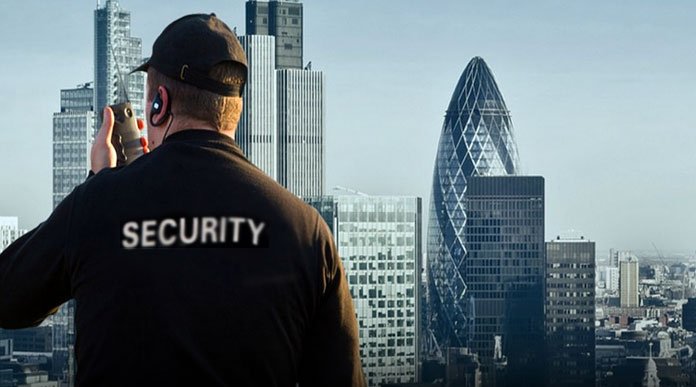Guarding Your Company: Corporate Security Basics Revealed
Guarding Your Company: Corporate Security Basics Revealed
Blog Article
From Cybersecurity to Physical Actions: Strengthening Corporate Protection in a Transforming World
In today's quickly progressing digital landscape, the relevance of business security can not be overemphasized. As cyber dangers become significantly innovative and widespread, organizations have to exceed typical cybersecurity procedures to protect their procedures and assets - corporate security. This is where the integration of physical security steps comes to be critical. By integrating the strengths of both cybersecurity and physical safety, companies can produce an extensive defense approach that deals with the varied variety of dangers they encounter. In this conversation, we will explore the changing risk landscape, the demand to integrate cybersecurity and physical security, the implementation of multi-factor verification actions, the value of staff member awareness and training, and the adjustment of protection measures for remote workforces. By checking out these essential areas, we will certainly get important understandings right into just how companies can strengthen their business safety in an ever-changing globe.
Comprehending the Changing Hazard Landscape
The advancing nature of the contemporary world requires a comprehensive understanding of the altering hazard landscape for efficient corporate safety and security. It is crucial for organizations to remain notified and adjust their safety and security measures to attend to these developing dangers.
One trick facet of comprehending the altering hazard landscape is acknowledging the different sorts of threats that organizations deal with. Cybercriminals are regularly developing new methods to manipulate vulnerabilities in computer system systems and networks. These threats can range from malware and ransomware attacks to phishing rip-offs and social engineering strategies. Furthermore, physical dangers such as theft, vandalism, and business espionage stay common issues for services.
Tracking and evaluating the risk landscape is necessary in order to determine potential risks and vulnerabilities. This entails remaining updated on the most recent cybersecurity trends, analyzing hazard knowledge reports, and conducting normal danger analyses. By recognizing the transforming risk landscape, organizations can proactively carry out ideal protection procedures to reduce dangers and safeguard their assets, reputation, and stakeholders.
Integrating Cybersecurity and Physical Protection
Incorporating cybersecurity and physical protection is critical for detailed corporate defense in today's electronic and interconnected landscape. As companies significantly count on technology and interconnected systems, the borders between physical and cyber hazards are coming to be obscured. To efficiently guard against these risks, an all natural strategy that integrates both cybersecurity and physical security measures is crucial.
Cybersecurity concentrates on shielding digital assets, such as data, systems, and networks, from unauthorized accessibility, disruption, and burglary. Physical security, on the various other hand, incorporates steps to safeguard physical possessions, individuals, and facilities from hazards and vulnerabilities. By incorporating these 2 domains, companies can deal with susceptabilities and threats from both digital and physical angles, therefore enhancing their total safety and security stance.
The assimilation of these 2 self-controls enables an extra thorough understanding of security dangers and makes it possible for a unified response to events. Physical access controls can be enhanced by integrating them with cybersecurity procedures, such as two-factor verification or biometric recognition. In a similar way, cybersecurity measures can be enhanced by physical safety steps, such as monitoring cameras, alarm systems, and protected access factors.

Implementing Multi-Factor Authentication Actions
As companies increasingly focus on thorough security measures, one reliable approach is the application of multi-factor verification procedures. Multi-factor authentication (MFA) is a protection technique that calls for users to provide multiple types of recognition to access a system or application. This approach adds an added layer of protection by combining something the individual understands, such as a password, with something they have, like a protection or a fingerprint token.
By carrying out MFA, companies can dramatically improve their safety pose - corporate security. Conventional password-based verification has its limitations, as passwords can be easily jeopardized or failed to remember. MFA alleviates these dangers by including an additional authentication factor, making it harder for unauthorized individuals to get accessibility to delicate information
There are several types of multi-factor verification methods offered, consisting of biometric authentication, SMS-based verification codes, and hardware tokens. Organizations need to evaluate their particular requirements and pick one of the most ideal MFA remedy for their demands.
However, the application of MFA ought to be thoroughly planned and implemented. It is critical to strike an equilibrium between protection and use to avoid customer frustration and resistance. Organizations needs to additionally take into consideration possible compatibility issues and provide adequate training and support to ensure a smooth change.
Enhancing Employee Recognition and Training
To reinforce company safety, organizations need to focus on boosting employee recognition and training. In today's quickly evolving hazard landscape, staff members play a critical function in guarding an organization's sensitive information and properties. Several safety and security violations occur due to human error or lack of recognition. Companies need to spend in extensive training programs to inform their employees about prospective risks and the finest techniques for mitigating them.
Effective employee recognition and training programs ought to cover a vast array of subjects, consisting of data protection, phishing assaults, social engineering, password hygiene, and physical safety measures. These programs should be tailored to the specific demands and obligations of various employee roles within the company. Regular training workshops, sessions, and simulations can assist workers create the necessary skills and knowledge to identify and respond to safety and security risks successfully.
Moreover, companies must encourage a society of safety understanding and provide recurring updates and pointers to keep workers informed concerning the most current threats and mitigation methods. This can be done through inner communication networks, such as e-newsletters, intranet portals, and email projects. By promoting a security-conscious workforce, companies can significantly decrease the possibility of protection incidents and shield their important assets from unapproved access or compromise.

Adapting Safety Measures for Remote Workforce
Adjusting company security steps to fit a remote labor force is important in making sure the defense of delicate info and possessions (corporate security). With the increasing trend of remote work, organizations should carry out ideal security measures to mitigate the risks related to this hop over to here new method of working
One vital element of adjusting security measures for remote job is developing safe and secure interaction networks. Encrypted messaging systems and online personal networks (VPNs) can help safeguard sensitive information and prevent unapproved accessibility. Furthermore, organizations should enforce using solid passwords and multi-factor authentication to enhance have a peek here the security of remote accessibility.
An additional vital consideration is the execution of safe and secure remote gain access to services. This includes supplying staff members with safe accessibility to business sources and data via digital desktop framework (VDI), remote desktop computer procedures (RDP), or cloud-based services. These technologies ensure that delicate info stays protected while allowing workers to do their roles efficiently.

Last but not least, comprehensive safety and security recognition training is important for remote staff members. Educating sessions ought to cover finest techniques for firmly accessing and dealing with sensitive info, determining and reporting phishing efforts, and preserving the total cybersecurity health.
Verdict
In conclusion, as the risk landscape continues to progress, it is essential for organizations to enhance their safety determines both in the cyber and physical domains. Integrating cybersecurity and physical protection, carrying out multi-factor verification actions, and boosting employee awareness and training are necessary actions in the direction of accomplishing durable business safety. Furthermore, adjusting safety and security steps to fit remote workforces is critical in today's transforming world. By carrying out these procedures, organizations can mitigate threats click to read more and secure their valuable properties from possible risks.
In this discussion, we will certainly explore the altering threat landscape, the demand to integrate cybersecurity and physical protection, the application of multi-factor authentication procedures, the importance of employee recognition and training, and the adaptation of safety and security measures for remote workforces. Cybersecurity actions can be matched by physical protection actions, such as surveillance cameras, alarm systems, and protected accessibility factors.
As organizations significantly focus on detailed safety and security actions, one efficient strategy is the implementation of multi-factor authentication procedures.In verdict, as the risk landscape proceeds to evolve, it is vital for organizations to enhance their protection measures both in the cyber and physical domain names. Incorporating cybersecurity and physical security, executing multi-factor verification procedures, and enhancing employee understanding and training are crucial steps towards achieving robust business protection.
Report this page